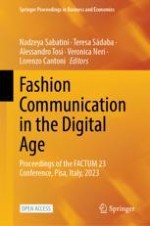This is an open access book.
FACTUM Conference proceedings are the output of one of the few academic events of its nature happening globally, researching fashion communication from different angles and perspectives. It includes contributions from scholars studying communication and marketing, management, digital transformation, and cultural heritage, among other disciplines. This book presents papers from the third bi-annual Conference, which aims to become the major reference point in the field.
These proceedings seek to promote theoretical and empirical interdisciplinary work on how various communication practices impact both the fashion industry and societal fashion-related practices and values. With these proceedings, several objectives are aimed to be achieved, namely:
- to establish and consolidate an international and interdisciplinary network of scholars in the field of fashion communication;
- to share methodological approaches;
- to expand the dialogue between communications studies and fashion-related disciplines;
- to encourage junior researchers to pursue their scientific interests in this field.
Finally, the book can be used by professionals in the field of fashion communication and marketing, who are eager to access sound research in a field that is developing very fast due to its digital transformation.
